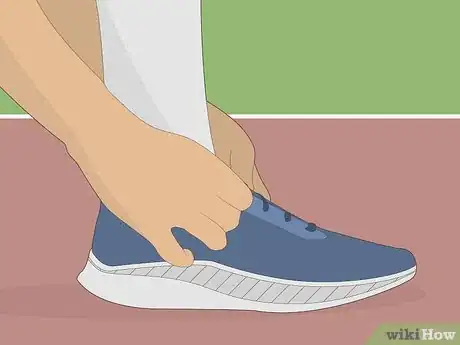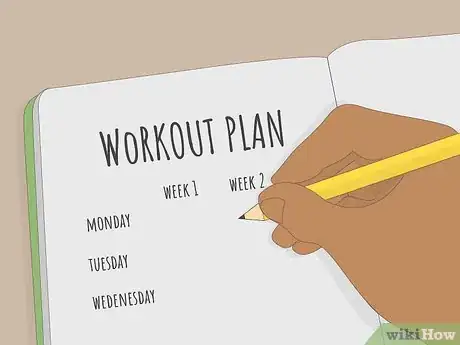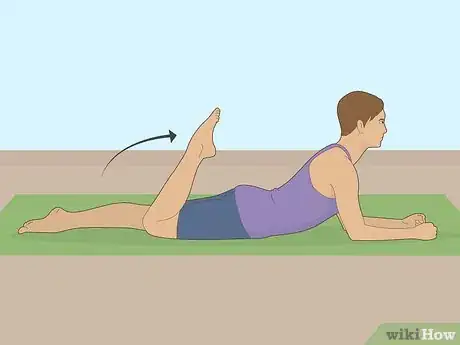This article was co-authored by Francisco Gomez and by wikiHow staff writer, Jessica Gibson. Francisco Gomez is the Head Coach at the FIT Potato Gym, a training gym established in 2001 in the San Francisco Bay Area. Francisco is a former competitive runner who helps endurance athletes train for major marathons like the Boston Marathon. Francisco specializes in Injury Rehab, Flexibility, Marathon Training, and Senior Fitness. He has a B.S. in Nutrition and Exercise Physiology & Running.
There are 11 references cited in this article, which can be found at the bottom of the page.
wikiHow marks an article as reader-approved once it receives enough positive feedback. This article has 52 testimonials from our readers, earning it our reader-approved status.
This article has been viewed 3,146,049 times.
Whether you're a seasoned long-distance runner or new to running, you probably know how important cardio endurance is. By bumping up your stamina even a little, you may be able to push on for another mile or run your personal best. If you're ready to take your running to the next level, read on for helpful suggestions.
Steps
Sample Exercises, Routine, and Schedule
Expert Q&A
Did you know you can get expert answers for this article?
Unlock expert answers by supporting wikiHow
-
QuestionHow can I last longer while running?
 Francisco GomezFrancisco Gomez is the Head Coach at the FIT Potato Gym, a training gym established in 2001 in the San Francisco Bay Area. Francisco is a former competitive runner who helps endurance athletes train for major marathons like the Boston Marathon. Francisco specializes in Injury Rehab, Flexibility, Marathon Training, and Senior Fitness. He has a B.S. in Nutrition and Exercise Physiology & Running.
Francisco GomezFrancisco Gomez is the Head Coach at the FIT Potato Gym, a training gym established in 2001 in the San Francisco Bay Area. Francisco is a former competitive runner who helps endurance athletes train for major marathons like the Boston Marathon. Francisco specializes in Injury Rehab, Flexibility, Marathon Training, and Senior Fitness. He has a B.S. in Nutrition and Exercise Physiology & Running.
Fitness Coach
-
QuestionWhat foods can I have to increase my stamina?
 Francisco GomezFrancisco Gomez is the Head Coach at the FIT Potato Gym, a training gym established in 2001 in the San Francisco Bay Area. Francisco is a former competitive runner who helps endurance athletes train for major marathons like the Boston Marathon. Francisco specializes in Injury Rehab, Flexibility, Marathon Training, and Senior Fitness. He has a B.S. in Nutrition and Exercise Physiology & Running.
Francisco GomezFrancisco Gomez is the Head Coach at the FIT Potato Gym, a training gym established in 2001 in the San Francisco Bay Area. Francisco is a former competitive runner who helps endurance athletes train for major marathons like the Boston Marathon. Francisco specializes in Injury Rehab, Flexibility, Marathon Training, and Senior Fitness. He has a B.S. in Nutrition and Exercise Physiology & Running.
Fitness Coach
-
QuestionWhat should I eat and drink after running?
 Community AnswerTry a banana and a glass of water. When running, your body uses carbohydrates for fuel, and loses water and electrolytes through perspiration. These are the things that you should focus on replacing through post-workout nutrition.
Community AnswerTry a banana and a glass of water. When running, your body uses carbohydrates for fuel, and loses water and electrolytes through perspiration. These are the things that you should focus on replacing through post-workout nutrition.
Warnings
- Listen to your body so that you avoid injury. Make sure to stretch, warm up, and cool down. Also, make sure that your shoes fit properly.⧼thumbs_response⧽
References
- ↑ https://www.outsideonline.com/2330591/heres-what-you-should-and-shouldnt-eat-run
- ↑ https://www.acefitness.org/education-and-resources/lifestyle/blog/519/how-do-i-train-for-a-half-marathon/
- ↑ https://www.acefitness.org/education-and-resources/lifestyle/blog/519/how-do-i-train-for-a-half-marathon/
- ↑ https://per.lacity.org/psb/lapd_tips.htm
- ↑ https://www.acefitness.org/certifiednewsarticle/633/want-to-improve-your-performance-breathe/
- ↑ https://www.220triathlon.com/training/run-training/how-hill-running-improves-your-fitness-strength-and-endurance/
- ↑ https://www.sciencedaily.com/releases/2008/10/081001093753.htm
- ↑ https://www.acefitness.org/education-and-resources/lifestyle/blog/519/how-do-i-train-for-a-half-marathon/
- ↑ Francisco Gomez. Fitness Coach. Expert Interview. 24 October 2019.
About This Article
To increase your running stamina, try cross training, such as lifting weights, which will teach your body to use oxygen more efficiently. You can also try intervals on a stationary bike. Just increase the tension on the bike until it's difficult to pedal, stand up, and push hard for half a minute. Then release the tension as you sit down on the bike and catch your breath. These intervals will help you when running hills. Additionally, swimming is a great way to build upper body strength, which many runners lack. To learn more about how to create a training schedule and start a routine, keep reading!






















-Step-17-Version-2.webp)





















































